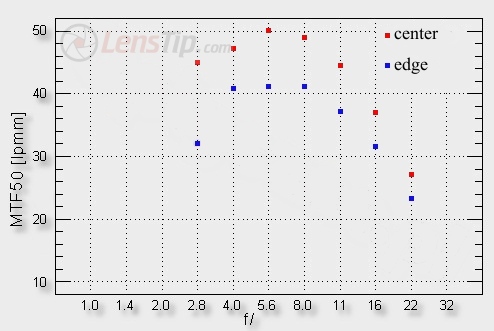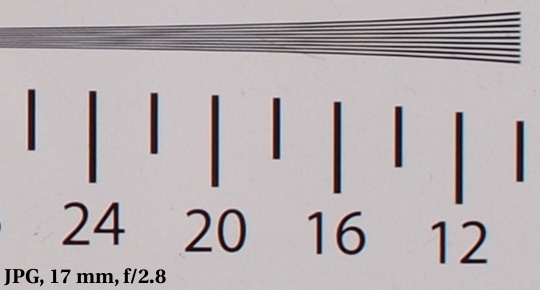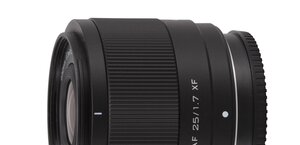Olympus M.Zuiko Digital 17 mm f/2.8
4. Image resolution

Looking at the function graph at the center of the frame, it’s hard not to be pleased. Even at the maximum aperture the lens reaches the level of 45 lpmm, and so generates very sharp images. Stopping down limits optical aberrations and improves image quality even more, so at f/5.6 the lens reaches around 50 lpmm. It’s a level typical of the best fixed focal lengths of the 4/3 system. Similar results were reached by Olympus ZD 2.0/50 Macro. Olympus 2/150 reached 51 lpmm, and the “pancake” 2.8/25 up to 49 lpmm. Basically, within the measuring errors, all the results are unanimous. Generally, the behavior of the tested lens at the center of the frame is very similar to the 2.8/25 “pancake”. The lens designed for DSLRs had MTFs slightly smaller at the maximum aperture, but slightly larger at f/4.0. From f/5.6 up, the two lenses show, within the measuring errors, identical behavior.
Please Support UsIf you enjoy our reviews and articles, and you want us to continue our work please, support our website by donating through PayPal. The funds are going to be used for paying our editorial team, renting servers, and equipping our testing studio; only that way we will be able to continue providing you interesting content for free. |
- - - - - - - - - - - - - - - - - - - - - - - - - - - - - - - - - - - - - - - - - - - - - - - -
In principle, something similar can be written about the behavior at the edge of the frame. The 25 mm pancake is better at the maximum aperture, and that’s noticeable, because it’s over 6 lpmm, but it also has a narrower angle of view, so it’s easier for it to behave better at the edge of the frame at f/2.8. For a change, at larger apertures it’s M. Zuiko 17 mm that’s slightly better. You can see one other thing too. By contrast with lenses like ZD 3.5/35 or 2.0/50, with both “pancakes” we have a large disproportion between the results at the center of the field and its edge. Larger angle of view is one thing, but as we’ll see in the other chapters, off-axial aberrations also have their influence over it. It doesn’t change the general appraisal of the edge of the frame behavior, though. Taking into account small dimensions of the lens and its angle of view reaching almost 65 degrees, the behavior is good.
At the end, traditionally, we present clippings of our test chart obtained from JPEG files saved simultaneously with RAW files.
 |






